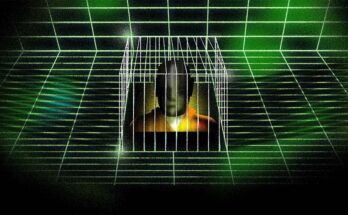“Why an internet that never forgets is especially bad for young people”
MIT Technology Review, December 27, 2019
Humans and technology
by Kate Eichhorn
“As past identities become stickier for those entering adulthood, it’s not just individuals who will suffer. Society will too.”
Until the end of the 20th century, most young people could take one thing for granted: their embarrassing behavior would eventually be forgotten. It might be a bad haircut, or it might be getting drunk and throwing up at a party, but in an analog era, even if the faux pas were documented in a photograph, the likelihood of its being reproduced and widely circulated for years was minimal. The same held true for stupid or offensive remarks. Once you went off to college, there was no reason to assume that embarrassing moments from your high school years would ever resurface.
Not anymore. Today, people enter adulthood with much of their childhood and adolescence still up for scrutiny. But as past identities and mistakes become stickier, it’s not just individuals who might suffer. Something much larger—the potential for social change and transformation—may also be at risk.
Nowhere to hide
In 2015, the New York Times reported that people around the world were taking 1 trillion photographs each year. Young people take a disproportionate number of them. Some of the teens and tweens I’ve interviewed in my research have told me they capture more than 300 images each day, from selfies to carefully posed photographs of friends to screenshots of FaceTime calls. About a billion photographs a day are uploaded to Facebook alone.
This incessant documentation did not begin with digital natives themselves. Their parents and grandparents, the first users of photo-sharing services like Flickr, put these young people’s earliest moments online. Without Flickr users’ permission or knowledge, hundreds of thousands of images uploaded to the site were eventually sucked into other databases, including MegaFace—a massive data set used for training face recognition systems. As a result, many of these photographs are now available to audiences for which they were never intended.
Meanwhile, digital natives are also the most intensively tracked generation at school. Millions of young people now attend schools where online learning tools monitor their progress on basic math and reading skills alongside their daily social interactions. The tools capture once ephemeral steps in students’ learning and social development.
Other software, like Bark and Gaggle, is used for security purposes, monitoring everything from students’ text messages, emails, and social-media posts to their viewing habits on YouTube by scanning for trigger phrases such as “kill myself” and “shoot.” Someone who messages a friend to say “I nearly killed myself laughing in class today” could be hauled in and asked questions about suicidal thoughts.
Digital school security companies typically delete student data after 30 days, but schools and school districts are free to keep it for much longer. The data is also frequently shared with law enforcement when potential threats are identified. It is unclear what data is being collected by security or learning software, and for how long it is kept. As three US senators wrote in a recent letter to more than 50 educational technology companies and data brokers, “Students have little control over how their data is being used …[they] are often unaware of the amount and type of data being collected about them and who may have access to it.” After all, without any clear checks and balances, one’s bad grades or an intemperate message from middle school could be sold to a job recruitment agency years later (see “Does keeping kids offline breach their human rights?”).
About the Author:
Kate Eichhorn’s most recent book is The End of Forgetting.






